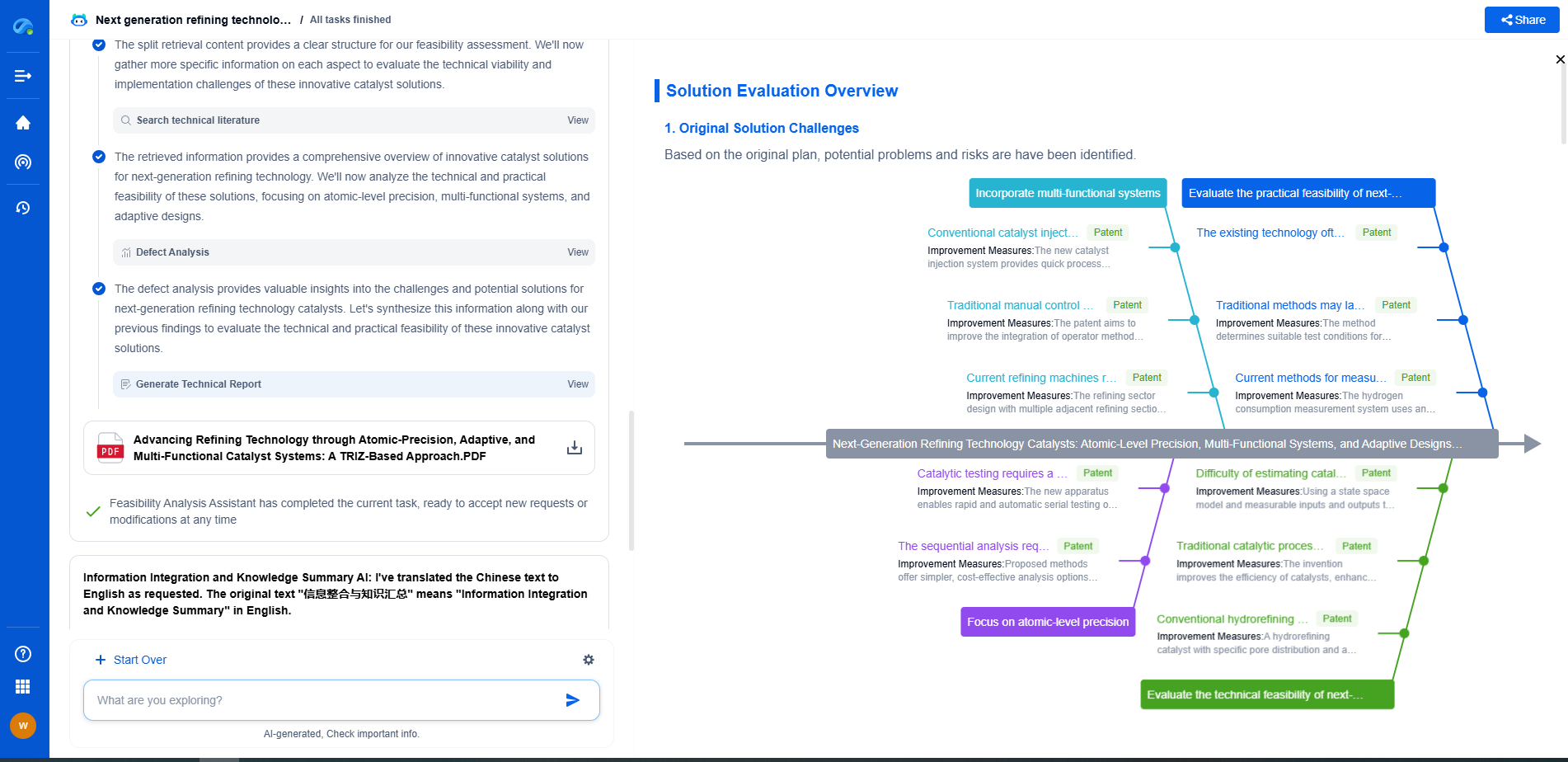What is a robotic cutting tool?
JUN 26, 2025 |
In the ever-evolving landscape of manufacturing and industrial processes, the advent of robotic cutting tools marks a significant leap forward. These advanced machines integrate robotics with cutting technologies, bringing numerous benefits to industries ranging from automotive to aerospace. But what exactly is a robotic cutting tool, and why is it revolutionizing traditional methods? This article explores the core aspects of robotic cutting tools, their advantages, applications, and future potential.
What Are Robotic Cutting Tools?
Robotic cutting tools are automated systems designed to perform precise cutting operations using robotic arms and specialized cutting implements such as lasers, water jets, plasma, or mechanical blades. These tools are powered by sophisticated software that controls their movements, ensuring accuracy and efficiency in cutting various materials. Unlike manual cutting tools, robotic systems can operate continuously, minimizing human error and maximizing productivity.
Advantages of Using Robotic Cutting Tools
1. Precision and Accuracy:
One of the standout features of robotic cutting tools is their unparalleled precision. Equipped with advanced sensors and control software, these tools can execute intricate cuts with micrometer accuracy. This level of precision is particularly crucial in industries where tolerances are tight, such as in the production of aerospace components and medical devices.
2. Increased Productivity:
Robotic cutting tools can operate 24/7, significantly boosting productivity. Their ability to work non-stop, coupled with fast processing speeds, means that large volumes of work can be completed in shorter timeframes compared to manual cutting methods. This efficiency is a game-changer for industries facing high demand and tight deadlines.
3. Safety and Ergonomics:
Traditional cutting methods often expose workers to hazards such as sharp blades and repetitive strain injuries. Robotic cutting tools, however, reduce the need for direct human involvement, thereby minimizing the risk of accidents. Additionally, these systems can be programmed to handle dangerous materials, further enhancing workplace safety.
Applications Across Industries
1. Automotive Industry:
In the automotive sector, robotic cutting tools are used extensively for cutting body panels, trim parts, and other components. The precision and speed of these tools ensure that manufacturers can meet the high standards of quality and efficiency demanded by the industry.
2. Aerospace Manufacturing:
The aerospace industry requires components that meet rigorous standards of precision and reliability. Robotic cutting tools excel in this domain, providing the accuracy needed to produce parts such as turbine blades and structural components from high-performance materials.
3. Textile and Fashion Industry:
In the textile industry, robotic cutting tools are transforming the way fabrics are cut for clothing and upholstery. These tools can quickly cut complex patterns with minimal waste, thereby reducing material costs and speeding up the manufacturing process.
Future Prospects of Robotic Cutting Tools
As technology continues to advance, the capabilities of robotic cutting tools are expected to grow exponentially. Developments in artificial intelligence and machine learning are poised to enhance the adaptability and intelligence of these systems, enabling them to handle even more complex tasks with greater autonomy. Additionally, as manufacturing processes become increasingly digitized, the integration of robotic cutting tools into smart factories will further streamline operations and optimize resource use.
Conclusion
Robotic cutting tools represent a formidable advancement in industrial technology, offering precision, efficiency, and safety that surpass traditional methods. As industries continue to embrace automation, these tools are set to play a pivotal role in shaping the future of manufacturing. Whether in automotive, aerospace, or textile production, the impact of robotic cutting tools is profound, driving innovation and enhancing competitiveness across the board.
Ready to Redefine Your Robotics R&D Workflow?
Whether you're designing next-generation robotic arms, optimizing manipulator kinematics, or mining patent data for innovation insights, Patsnap Eureka, our cutting-edge AI assistant, is built for R&D and IP professionals in high-tech industries, is built to accelerate every step of your journey.
No more getting buried in thousands of documents or wasting time on repetitive technical analysis. Our AI Agent helps R&D and IP teams in high-tech enterprises save hundreds of hours, reduce risk of oversight, and move from concept to prototype faster than ever before.
👉 Experience how AI can revolutionize your robotics innovation cycle. Explore Patsnap Eureka today and see the difference.
- R&D
- Intellectual Property
- Life Sciences
- Materials
- Tech Scout
- Unparalleled Data Quality
- Higher Quality Content
- 60% Fewer Hallucinations
Browse by: Latest US Patents, China's latest patents, Technical Efficacy Thesaurus, Application Domain, Technology Topic, Popular Technical Reports.
© 2025 PatSnap. All rights reserved.Legal|Privacy policy|Modern Slavery Act Transparency Statement|Sitemap|About US| Contact US: help@patsnap.com

